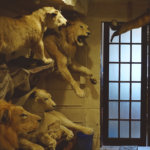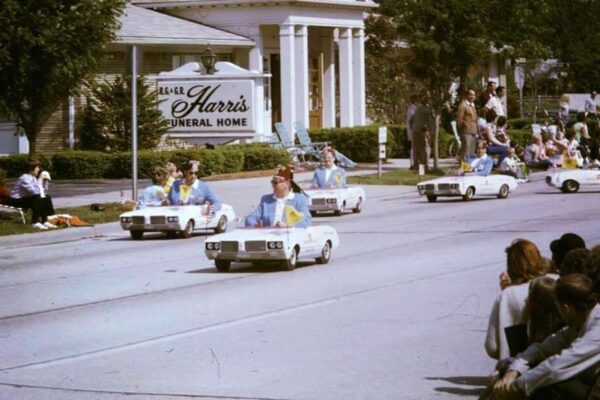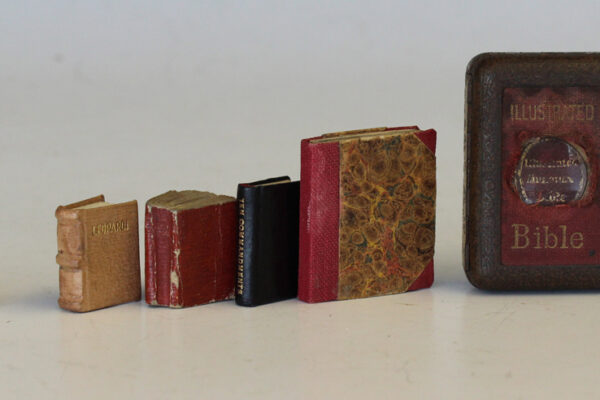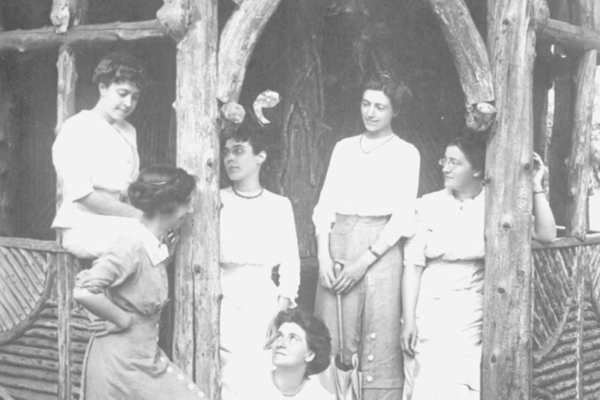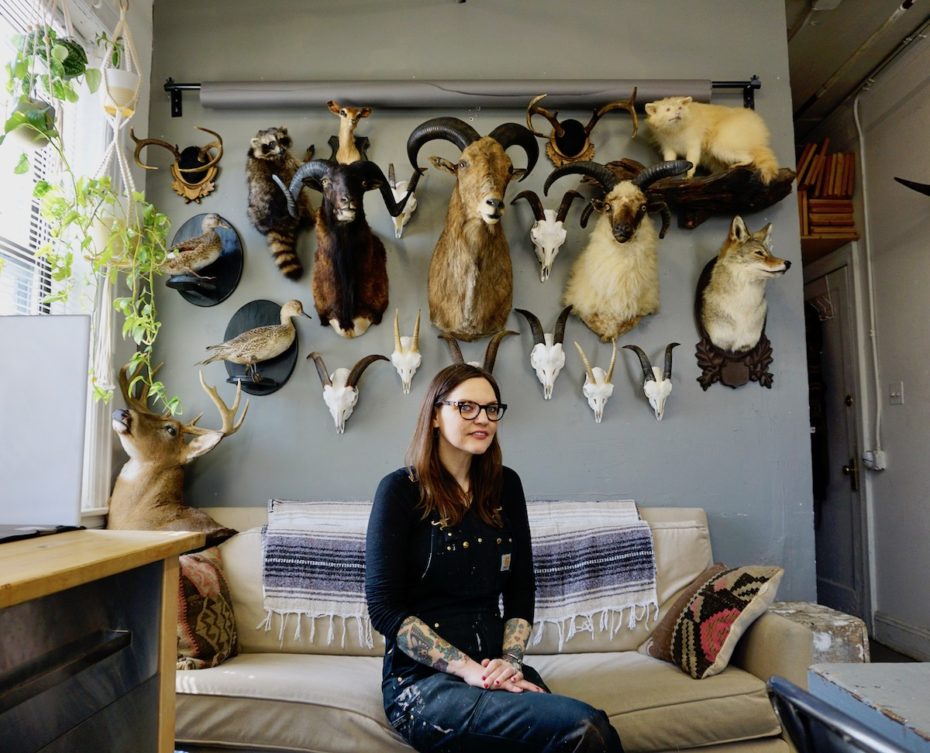
Ah, Death. The last taboo – or one of them, and especially in America. “I think a lot of people assume I’m out here hunting animals, which just isn’t the case,” Amber Maykut tells us in her New York City taxidermy studio, “I study them. I love them.” Her workspace is tucked away in a quiet corner of Brooklyn. Plants, art, and animals mingle on her shelves, and a cheery, vintage Coca-Cola crate houses animal forms on a microwave, “an ever-evolving mess,” she says, laughing. Our taxidermist herself is both soft-spoken, and surrounded by tools that wryly whisper, if I had to, I could basically stuff you.
We sat down with Amber to talk about the road to becoming one the most preeminent, cutting-edge taxidermists in New York, and to ask her every taxidermy question we’ve ever had (but were too shy to ask). Like, where do all her animals come from? What were her ethics regarding taxidermy? And how much would it cost to stuff my cat?
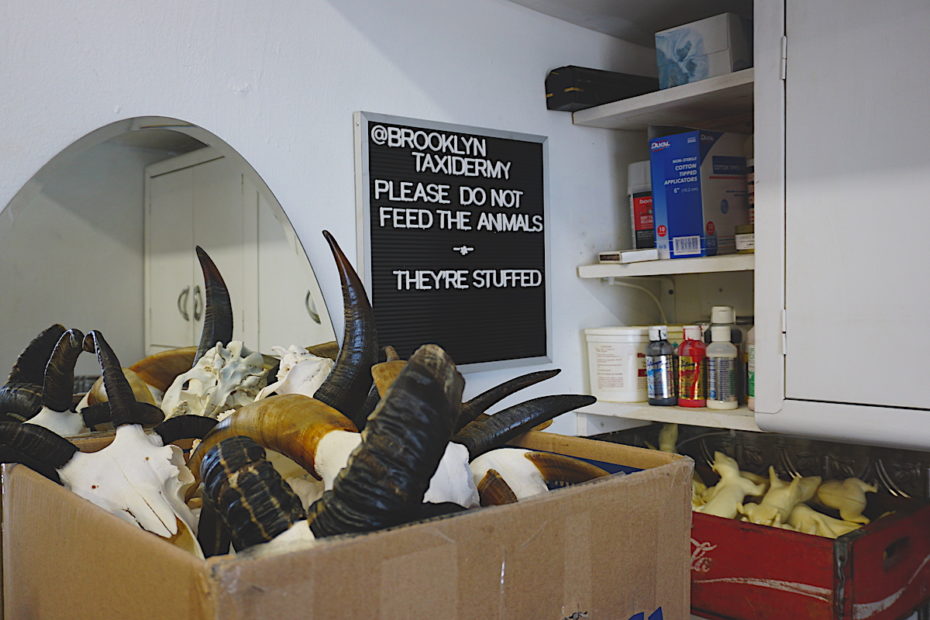
Taxidermy isn’t new to New York, and especially Brooklyn, where Amber offers courses for novices and experts alike. Nor is it new to other über hip cities where back-to-the-roots craftwork is making a comeback. Amber grew up in New Jersey. “I don’t think I’d ever even seen taxidermy,” she says about the root of her passion, “There was barely any wildlife. Like here [in NYC]. We did have butterflies, and I’d collect the dead butterflies and hide them under my bed. Eventually I learned how to pin and mount them.” She takes moment, and laughs, “I always say they’re the gateway drug to taxidermy.”
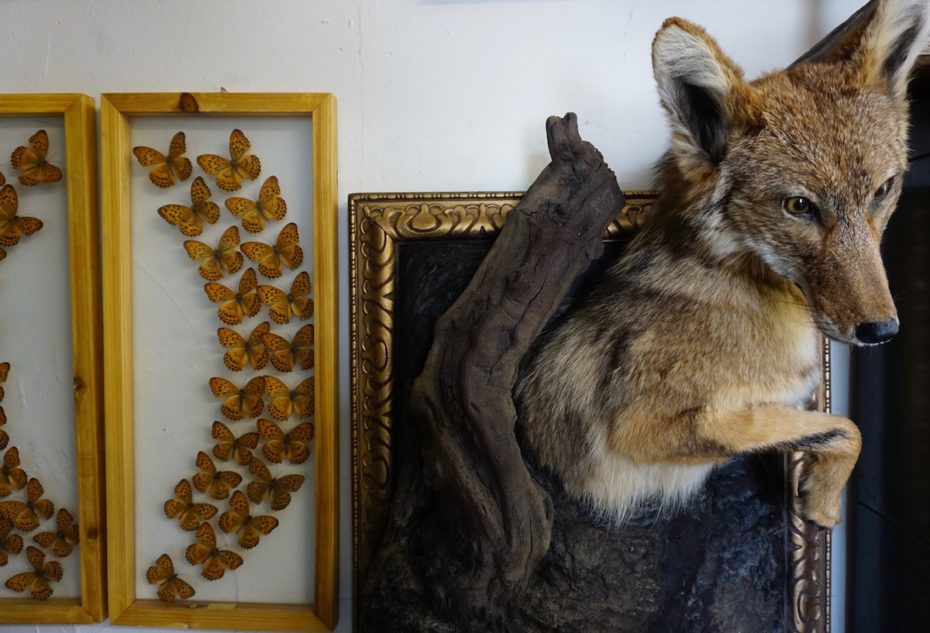
Her comments on New York City nature hit a very real nerve. Most weekdays in the city are spent behind computer screen, and shuffling between subway trains. No wonder the tactile connection between us, and nature, is starting to feel tenuous and sometimes even voyeuristic (hi, Planet Earth). Taxidermy, she says, is a way to constantly consider that connection.
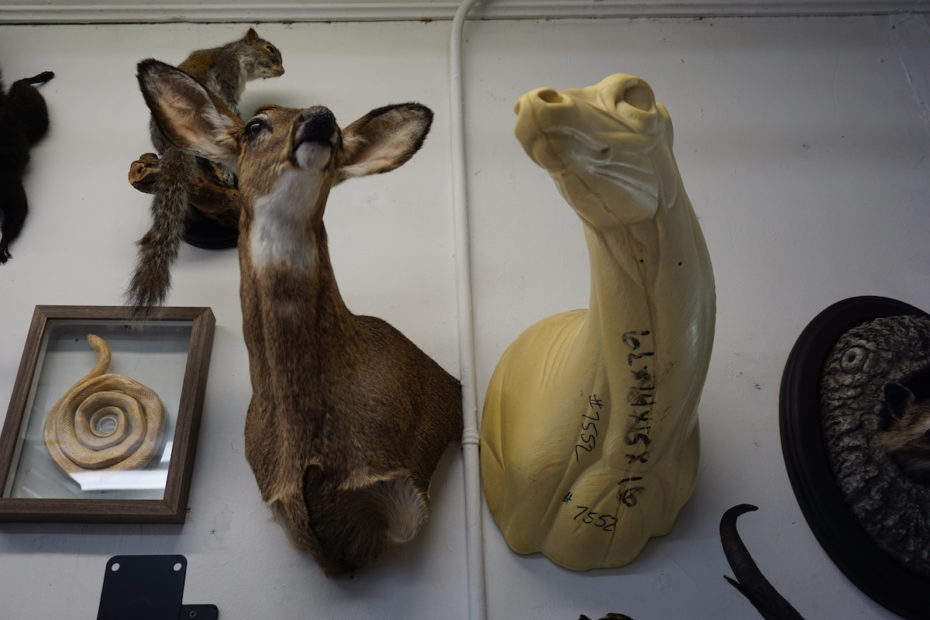
The art of taxidermy basically began the moment humans got curious. The ancient Egyptians pioneered embalming, and Medieval apothecaries and astrologists were some of the first clients to commission taxidermy works to dress up their shop windows. By the 19th century, Victorians were all over it. Pre-1950s and polyurethane, says Amber, they wrapped taxidermy animals in excelsior, which is basically a wood-wool wrapped in butcher’s string. “It’s what Teddy Roosevelt’s animals are stuffed with, and most of the stuff in the Natural History Museum,” she says, “They had to get all their field dressing measurements of the animal right, take tons of pictures, and really get it perfect.”
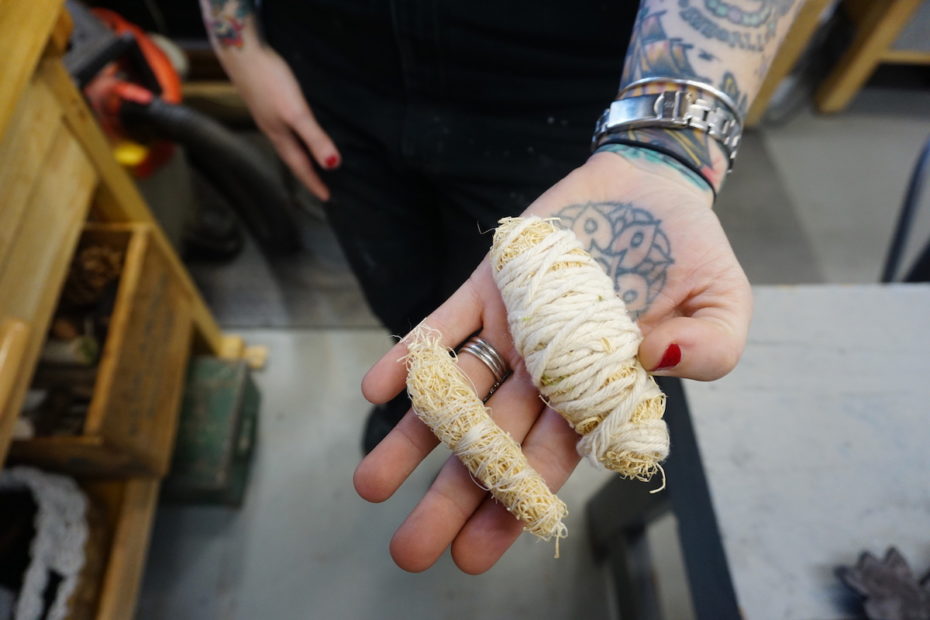
“I was a collector for a long time, and I just started taking lessons and went to school for it,” she says, “It was something I was looking at for years, and I didn’t really know where to go for it. Like, maybe Montana for a few months to study it?” She ended up finding her tutelage close to home as an intern at the Museum of Natural History in New York, and in New Jersey at Buckshot Taxidermy. There, she studied under her mentor-turned-colleague Mark Van Lueven, who’s won awards for his work at national and international levels.
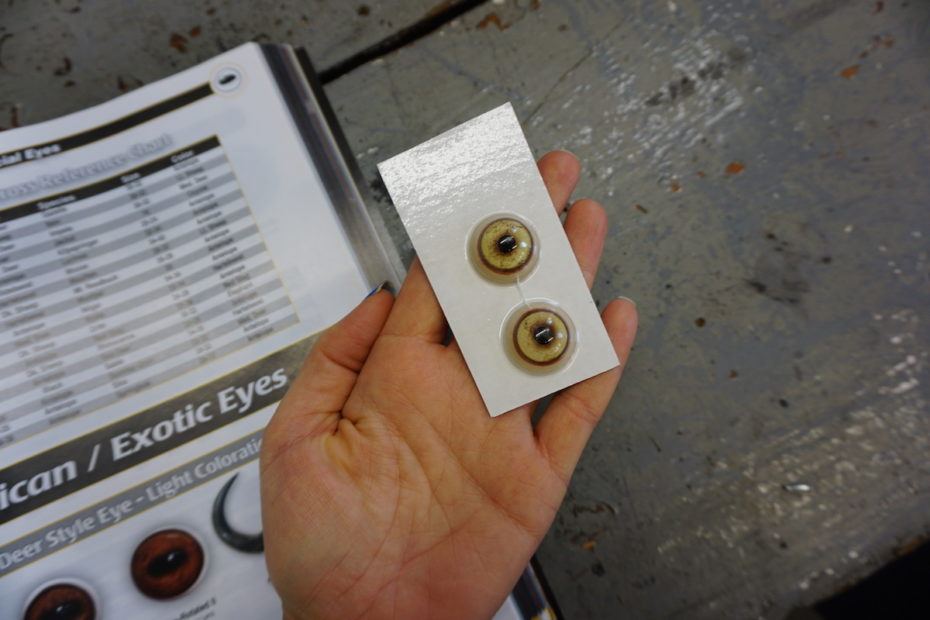
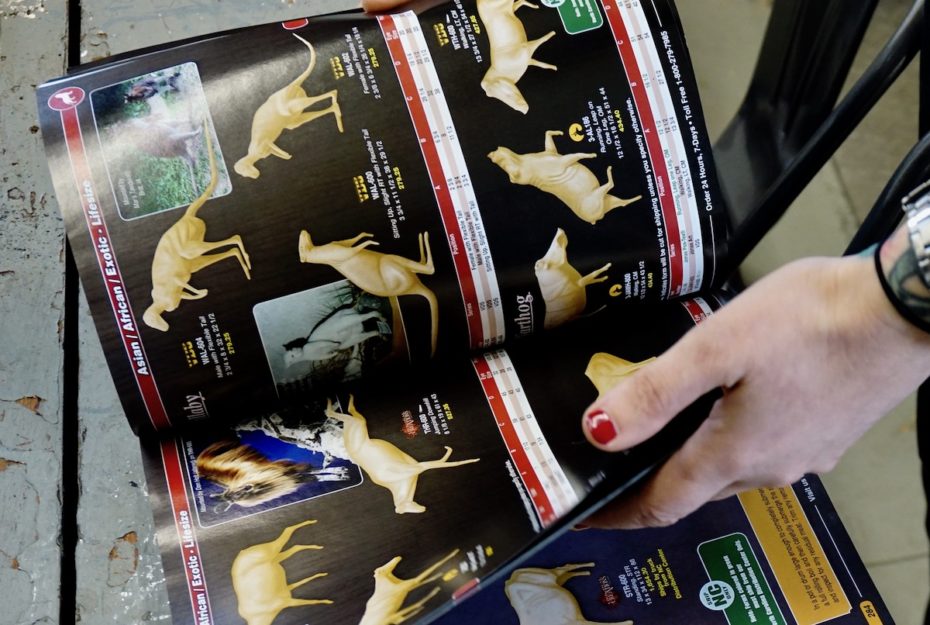
“I have no urge to go hunting. Never have,” says Amber. “The biggest misconception is people think we’re killing animals or that they’re harmed by or for us. Wildlife death is a natural thing. Also, in taxidermy we only use the skin.” The word taxidermy, she explains, is about the movement of skin. Taxis = movement (think yellow cabs). Derma = skin (dermatology). Amber’s taxidermy is also sustainable, as she sources a lot of her skins from butchers who are only using innards. “There are so many,” she says of her sources, “like my mentor, who’s kind of a genius and opened his shop right across from a zoo.”
The zoo, she says, has a permit with the state to collect road-kill to feed their animals. Bears, for example, will be fed with road-kill deer whose skin ends up in her hands. She’ll also go to surplus fabric auctions of big fashion houses like Burberry (before banning fur in 2018) who will toss out “tons and tons of fur” if it has the slightest imperfection. The surplus auctions aren’t open to everyone, though (you need to have a wholesaler’s license). Then there are pest control companies, animal refugees she can source from – the list goes on, and it becomes clear: this woman’s no hunter. She’s a gatherer.
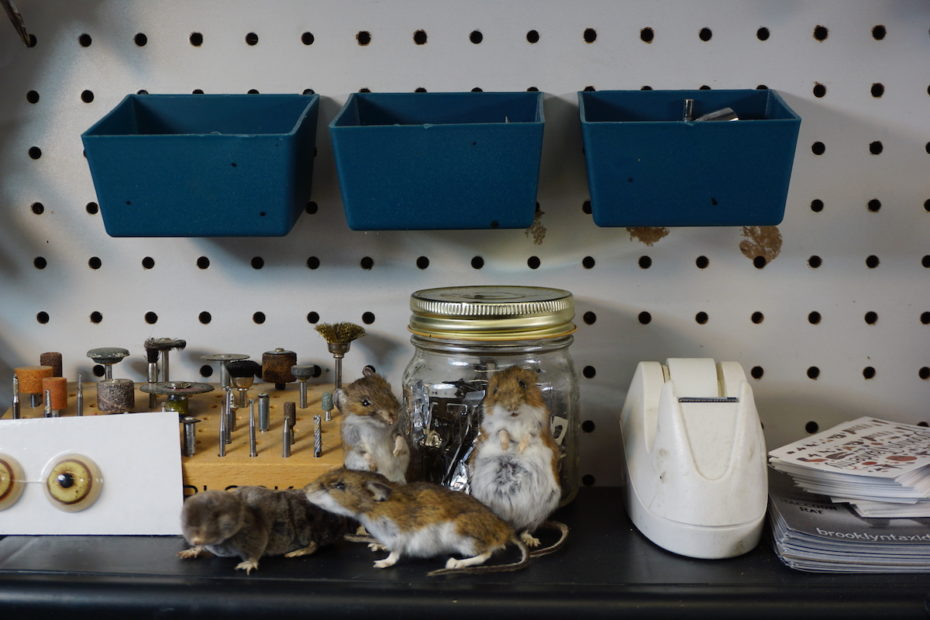
Skin is removed from an animal and placed onto a mannequin or a form, and from there her work is quite sculptural. The mice she uses in her classes – all pet store feeder animals, by the way – are raised humanely. Amber’s students also have to get their hands dirty in the class. “They skin the animal and put their insides in the freezer,” she says, “and those insides go back to their intended source as snake food.” Her craft also requires a range of skill sets, at once demanding a strong hand to work machinery, another with the artist’s touch. “It’s science, and art, and nature,” she says, “a lot of knowing your anatomy, knowing sculpture, doing basic hardware stuff, handling antiques and making props.”
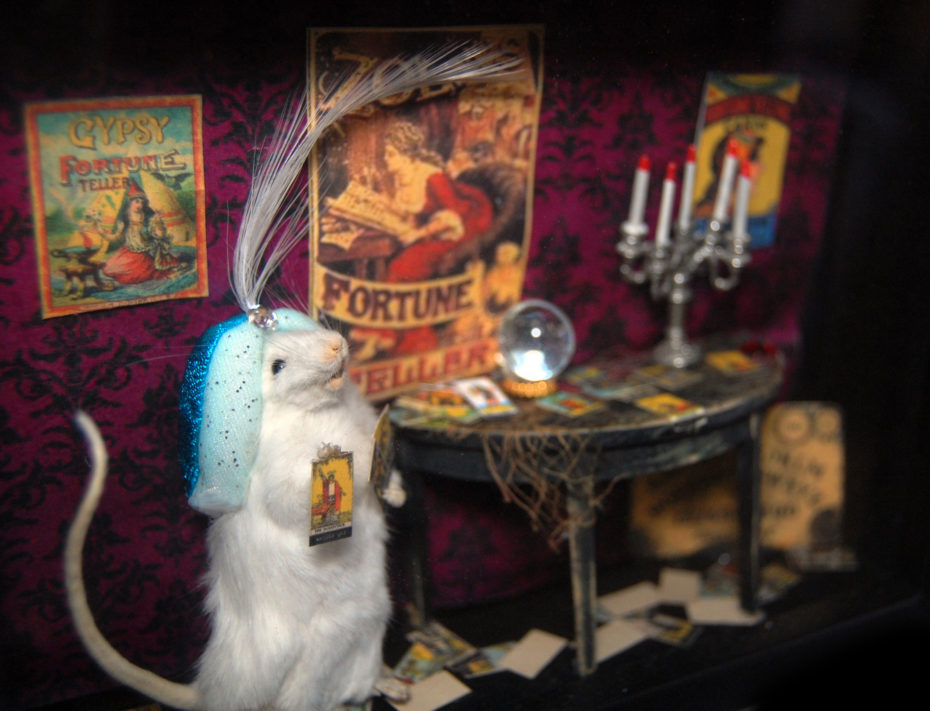
We need a moment to talk about the props. They range from mini-axes for a heavy metal mouse group, tiny hats and clothes. In Amber’s studio, a wolf could come out with wings. Head-swapping, it seems, is encouraged – there’s a bird with a bunny head in one corner. One of her favourite pieces is a vintage albino raccoon she repaired, and another normal one that fits quite cosily in her arms.
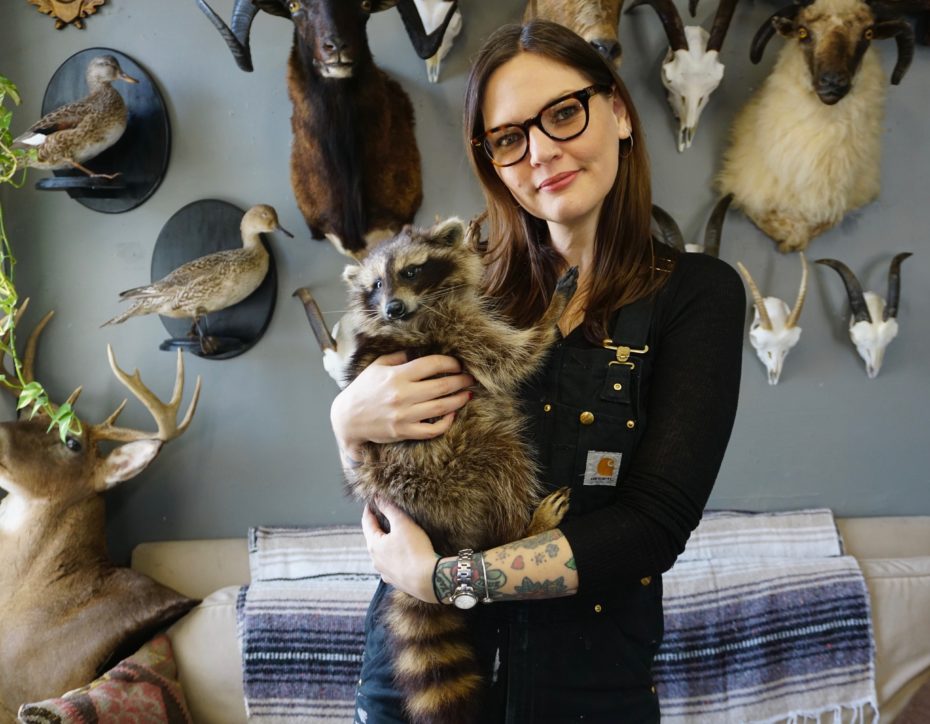
Naturally, being a woman in a male-dominated industry can add a whole other layer to navigating an eclectic community. “You do have to deal with a lot of old school taxidermy guys who are coming from a totally different place,” she says diplomatically, “people who are trophy hunting, and game mounting for their cabin, or for sustenance. They sometimes don’t understand the anthropomorphic aspect, or the small game – not even game – but like, mouse taxidermy. They don’t see the meaning in it – like, why am I doing it?”
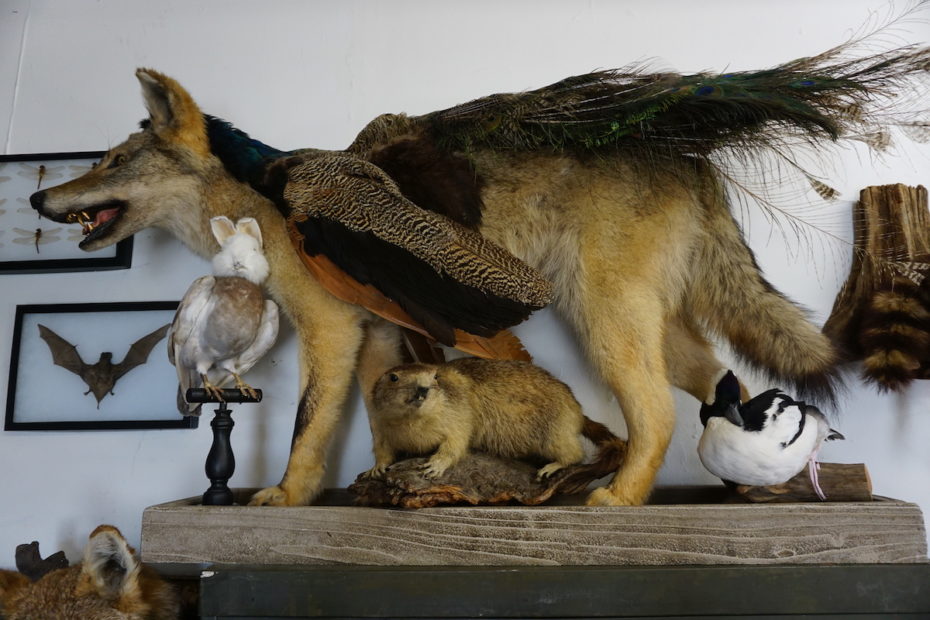
Why is she, though? “People are very opinionated about it,” she says, saying that she understands it’s not for everyone, “But I think that’s a part of what makes art art. It’s provocative, and it makes you feel something. Whatever it is, it’s interesting. I’m often like, ‘Am I getting pranked? Is this real?’ with some client requests.”
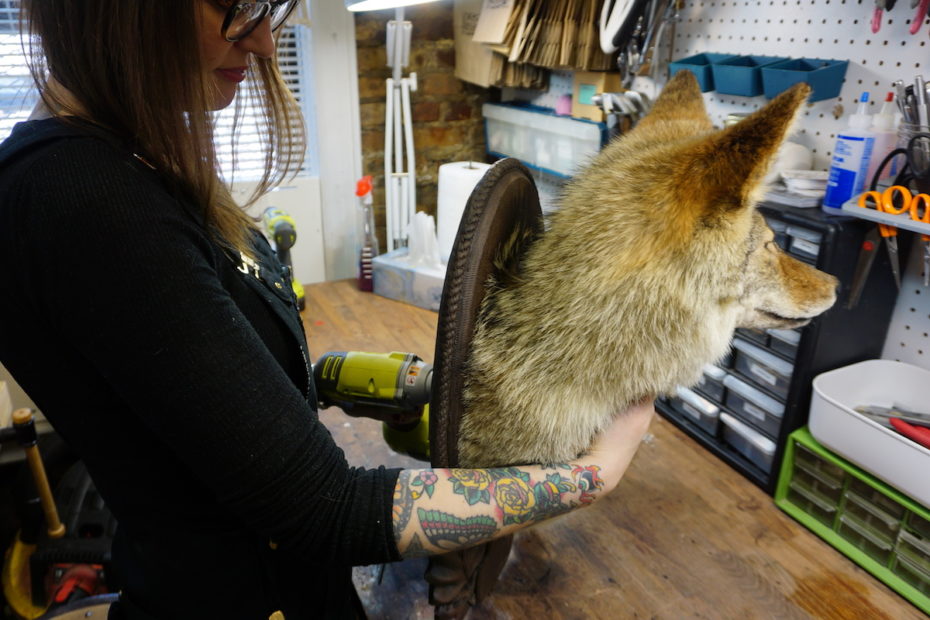
“Another mentor of mine in Queens had an old woman come in from Harlem with her whole family,” she says about one of the weirdest taxidermy stories she’s ever heard, “the grandparents, the parents, the kids – I mean just everyone. They spend an hour on the train getting there to taxidermy a bird she said she’d frozen. She shows up, very emotional, and hands-off the plastic bag before leaving. When he opened it, it was just a bag of hot dogs. She was like, ‘Oh no!’ because she’d clearly grabbed the wrong bag, and was really upset.” To make light of the situation, the taxidermist fixed fake bird feet to the hot dogs, and put them on a perch while she fetched the real thing. hot dogs on a perch with fake bird feet bird legs while she fetched the real thing.
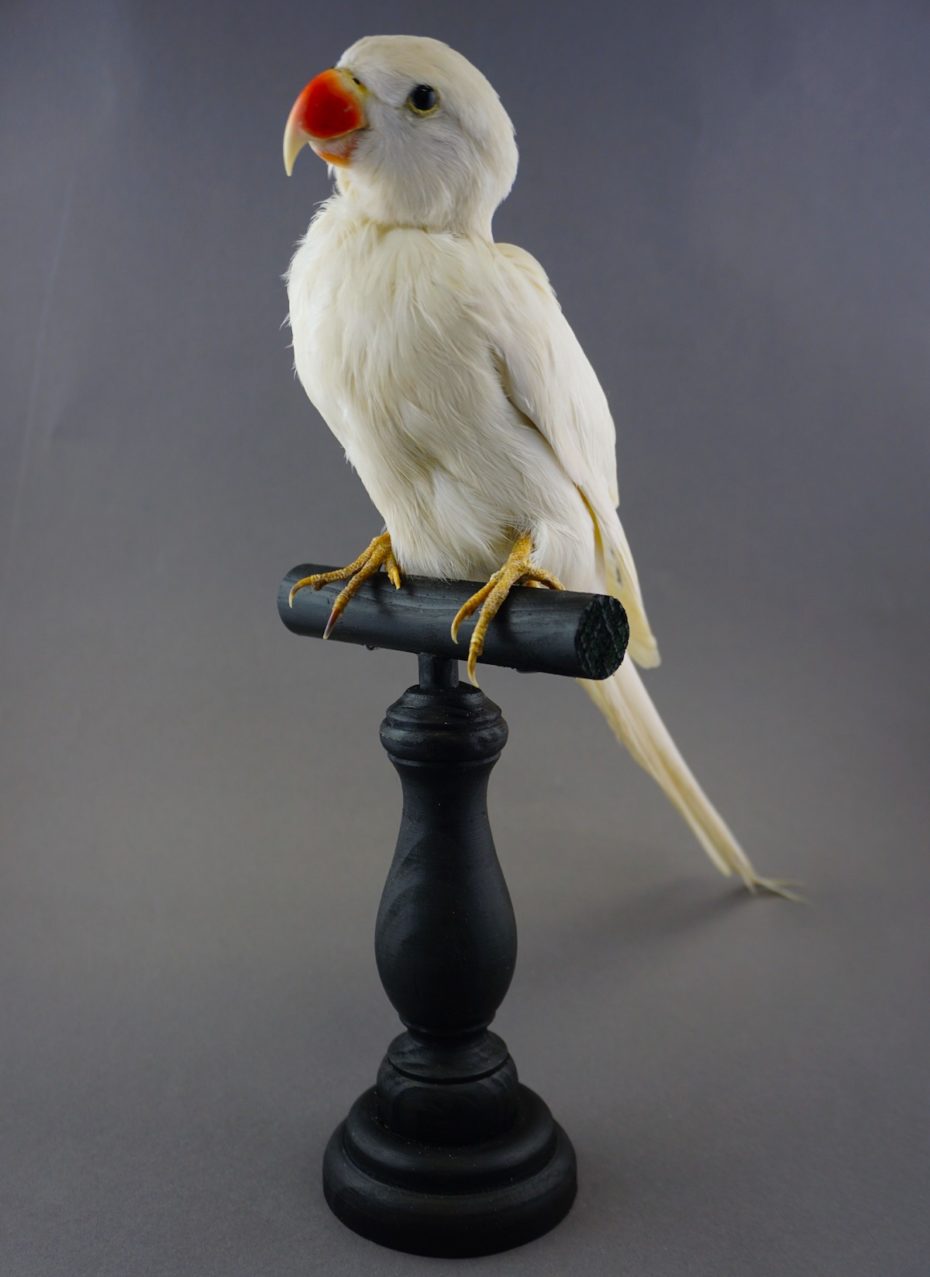
Simply put, it’s an industry where anything can happen. Amber’s art is born in a curious place in-between life and death, and to which we often turn a blind eye. It’s a place wherein no being is yet embalmed, filled with formaldehyde, or ready for an open casket funeral. There are often guts, and in very close proximity. “You just have to see the sunny side of things in this line of work” she says, “A lot of people think of death as the end. For us, it’s just the beginning.”
Learn more about signing up for Amber’s classes and services at her business, Brookyln Taxidermy, on her website and Instagram. The price for my taxidermy cat, by the way, starts at about $1,000.




